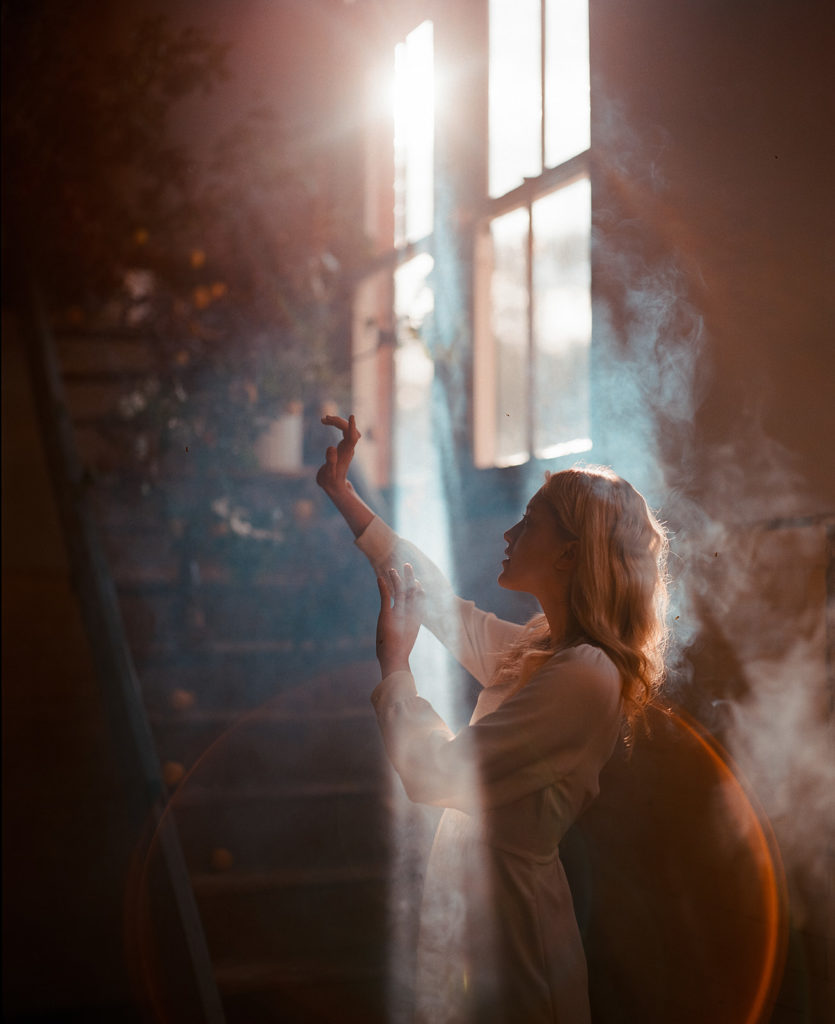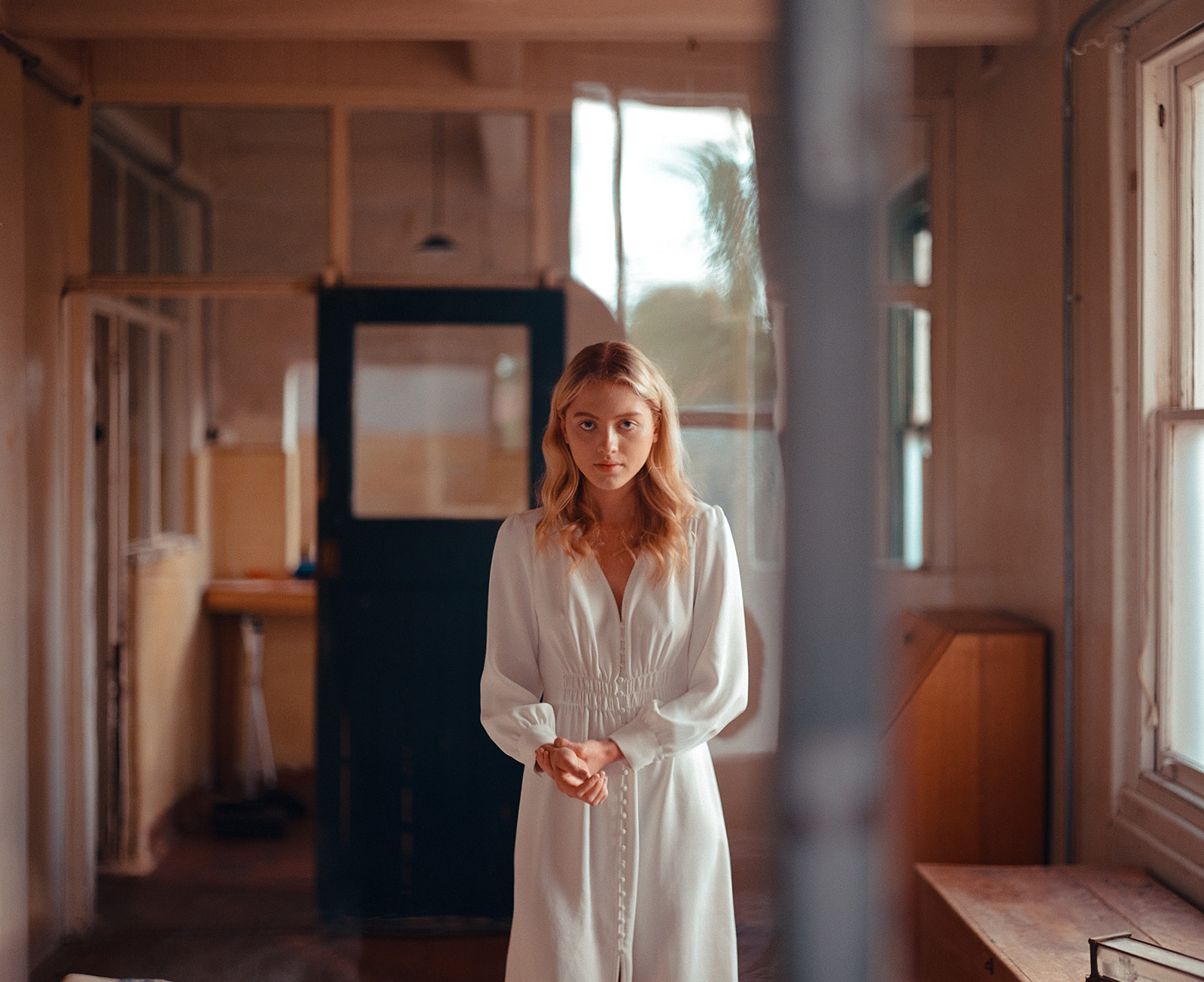Today I want to talk to you about shooting 4×5, or ‘large format’ film. It isn’t that popular amongst photographers today but that’s exactly why I want you to learn a bit more about it. Shooting and then developing the film yourself can be a really rewarding experience, so in this article, I describe the process of shooting large format film and why I love it.
WHAT IS LARGE FORMAT FILM AND WHY USE IT?
First, I just want to make sure you understand what I mean by: ‘Large format film’ – it literally means ‘big film size’ and large format cameras use 4×5 film, so a lot of people alternate between calling it large format film and 4×5 film. Simple stuff but best to make sure we’re all on the same page!
Since shooting in 4×5 film is analogue instead of digital, it means that when you blow up the image from the negative, it can’t pixelate. Why? Well, because it’s analogue, it doesn’t have any pixels! That’s why a lot of people use 4×5 on big campaigns to make sure they get high resolution imagery…and as I think I already mentioned it’s actually so fun to work with.
WHAT FILM SHOULD I USE?
I use black and white sheet film, usually the Kodak T-MAX 400 standard film that’s easy to develop. You can get 50 sheets in one box and you don’t even need a darkroom to develop as long as you have a tent – it might look a little sci-fi, but it works great! I use the tent as a ‘film changing room’, basically to get the film into the film holders and also to get it into my developer tank.
Here’s a really important tip: When you’re loading your film into the film holders, make sure to note the top of the film. There should be a white border – this means that the film hasn’t yet been exposed. Once you’ve taken the photo, that border becomes black so you know that it’s ready to be developed.
And another one: If you’re in a darkroom or can’t see because of the tent, put your hands in and feel along the border to find little bumps that tell you if the film is ready to be developed.
And another one: It’s really important to label the film with a piece of tape so you don’t forget what you’re shooting, especially if you’re not going to be coming back to the images for a while.
THE DEVELOPING PROCESS
OK, so let’s climb into the tent (not literally) so you can start developing these photos.
In your tent, you can transfer the sheet films (usually six images at a time) into the developing tank and seal it with the cap so that no light can get in. From there, you can start pouring in your chemicals to start the developing process. This process is perfect if you don’t have a ton of space because it can all be done nice and easy in the tent or in the developing tank – I usually do it in my laundry sink at home!
If this process sounds a little too time-consuming, you can always post or take the film to your local developing shop. However, this can be pretty expensive and some shops don’t process 4×5, so it’s best to call ahead to confirm as well as shop about to get the best price.
One other tip: When you’re out and about taking shots, remember that you’ll see everything upside down and backwards. Keep this in mind and you’ll get better results. The camera also allows you to shoot both portrait or landscape photos, so it’s pretty versatile. After you’re done, take out the dark slide and make sure your lens is closed so you don’t ruin the piece of film and waste an entire day’s work.
WHY I CHOOSE TO SHOOT LARGE FORMAT FILM
Shooting and developing large format film can be a lot of work… Especially if it’s just for one photo. But, I enjoy this process because it is the exact opposite of digital photography – it’s tangible, challenging and really rewarding.
If you go out and do a whole shoot for only six images, the effort you put in to those six images will make you feel so much more excited to get home and develop them than if you shot 600 images and just have to go back and delete 594 of them.
And yes, it can be expensive and time-consuming but it also gives you the chance to fall in love with the images that you’re shooting. It’s good to try and appreciate photography as an art form and not just a job…. Just like when we all start out with our first camera.

“IS IT FOR ME?”
I believe that large format film lets you to think differently compared with when you’re just clicking a button on a digital camera. Even the tripod that you’ll usually use for capturing large format film can create a unique energy, since you won’t be used to using it.
Getting out of your comfort zone and practising different types of shooting is a great way to change your same routine, and shooting and developing large format film is my favourite way to do this.
After saying all of that, this type of photography won’t be for everyone. You don’t want to buy a camera, film and developing supplies just to find out that you don’t really like the process. So if you want to try out 4×5 film without spending too much, you could try to ask a friend to borrow their camera and just have a play before making any big purchasing decisions.
If you want to get a better idea of what it’s like to shoot and develop large format film, check my video on IGTV where you’ll learn all about my camera, its parts and how I use it. And don’t forget to check out my other videos and Rangefinder articles for more tips and tricks on photography!
